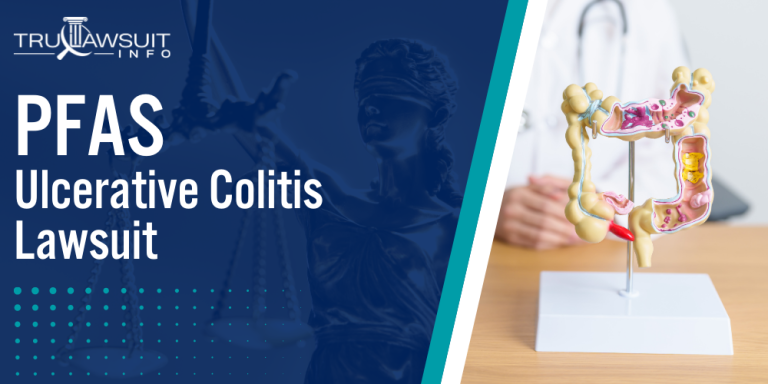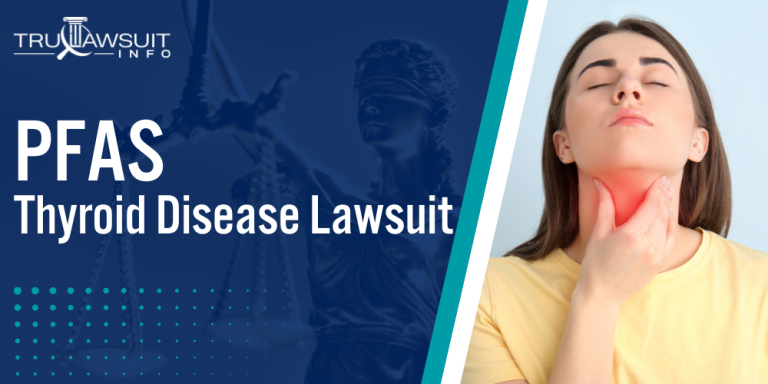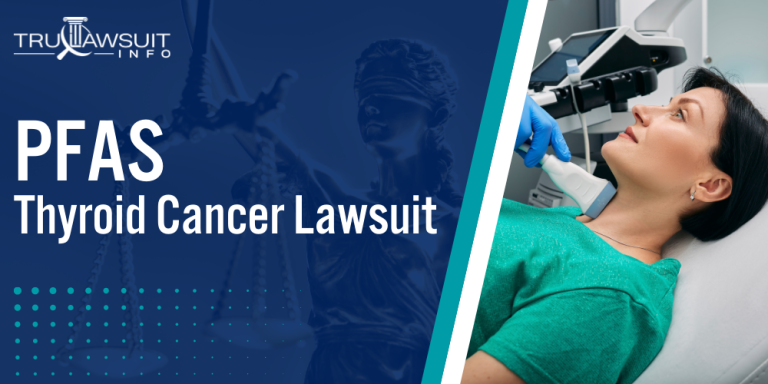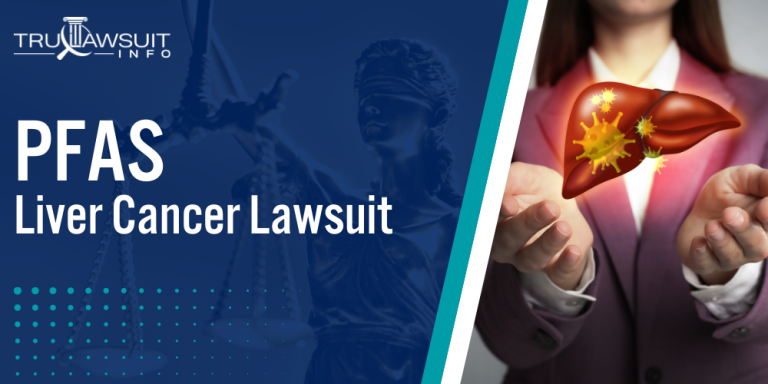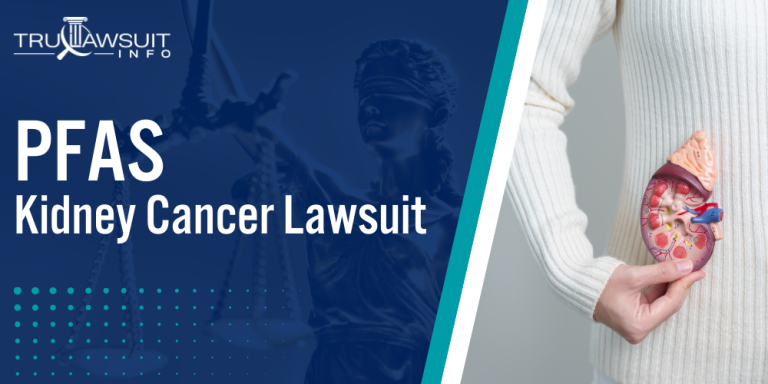Comparative Analysis of PCB Laws Worldwide
Key Takeaways:
- PCB laws ensure the safe management and disposal of polychlorinated biphenyls to protect the environment.
- Global regulatory frameworks, including those of the United States and European Union, outline strict controls over PCB use.
- Continuous updates in laws and guidelines reflect the evolving understanding of the risks associated with PCB pollution.
Overview of PCB Laws Worldwide
On this page, we’ll provide a comparative analysis of PCB Laws Worldwide, differences in PCB regulations across countries, how international cooperation can improve PCB management, and much more.
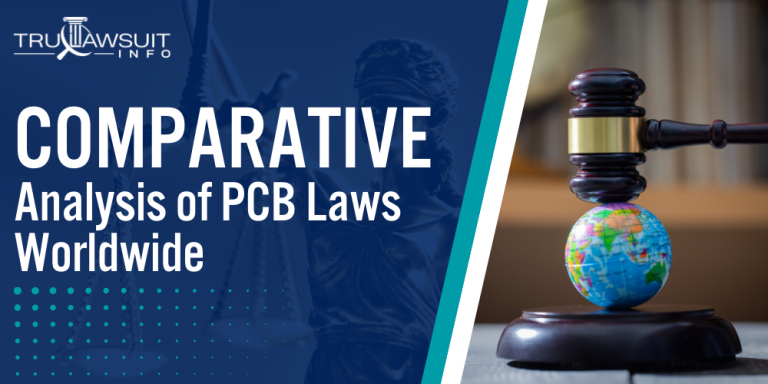
Intro to PCB Laws Worldwide
Here are some key points about PCB laws worldwide:
- The Stockholm Convention on Persistent Organic Pollutants, ratified by 184 countries, aims to eliminate or restrict the production and use of PCBs
- The United States banned the manufacture of PCBs in 1979 under the Toxic Substances Control Act
- The European Union has strict regulations on PCB disposal and requires the phase-out of PCB-containing equipment by 2025
If you or a loved one has been exposed to PCBs and suffered health consequences, you may be eligible to file a PCB Lawsuit.
Contact TruLawsuit Info for a free consultation using the chat on this page to receive an instant case evaluation.
Table of Contents
United States PCB Laws and Regulations
In the United States, the regulations surrounding Polychlorinated Biphenyls (PCBs) are defined by federal law and enforced by environmental agencies.
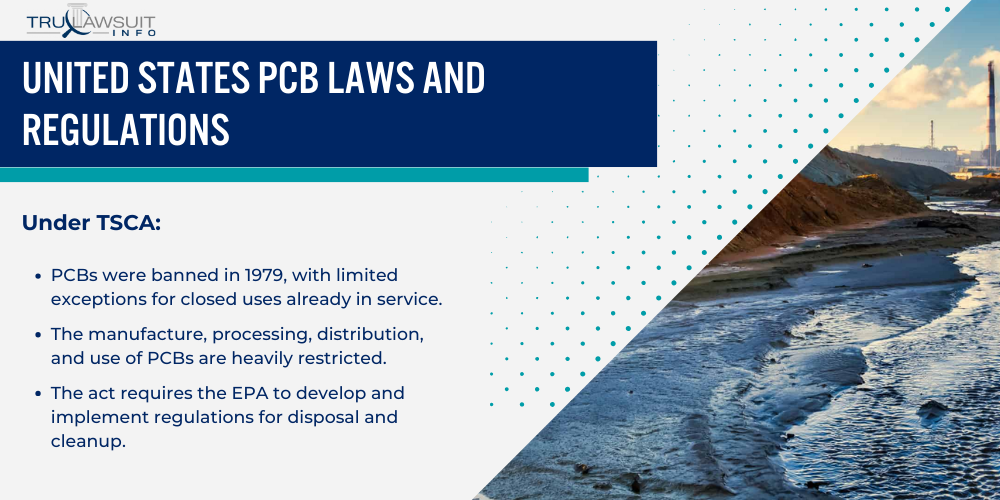
These laws ensure the safe handling, use, cleanup, and disposal of PCBs due to their environmental and health risks.
The Toxic Substances Control Act (TSCA) and PCBs
The Toxic Substances Control Act (TSCA) is the primary federal statute for managing hazardous chemicals, including PCBs.
Under TSCA:
- PCBs were banned in 1979, with limited exceptions for closed uses already in service.
- The manufacture, processing, distribution, and use of PCBs are heavily restricted.
- The act requires the EPA to develop and implement regulations for disposal and cleanup.
- Exemptions and authorizations can be granted under specific, controlled circumstances.
EPA’s Role in Enforcing PCB Laws
The Environmental Protection Agency (EPA) enforces the legal framework set out by TSCA for PCBs.
In its regulatory role, EPA:
- Sets forth PCB use, cleanup, and disposal regulations, ensuring compliance with TSCA.
- Monitors PCB activity across industries to prevent illegal use or improper disposal.
- Works toward minimizing environmental and health risks associated with polychlorinated biphenyl exposure.
- It provides guidance and updates on regulations, such as the changes to the PCB Cleanup and Disposal Program effective February 26, 2024.
State-Level PCB Laws and Regulations
States play a crucial role in regulating PCBs alongside the federal government.
This two-tiered approach ensures comprehensive PCB management that considers regional variations and potential environmental risks.
In addition to federal regulations, state regulations on PCBs can also apply:
- State laws can complement or reinforce federal EPA regulations to ensure local compliance.
- States may have specific disposal and cleanup principles that businesses must adhere to.
- Some states adopt more stringent measures for managing PCBs than mandated by the EPA.
- Local agencies are often in charge of enforcement at the state and community levels.
These regulations integrate with federal guidelines to create a robust framework for managing the risks posed by PCBs in various contexts.
European Union PCB Laws and Directives
The European Union’s regulatory framework on polychlorinated biphenyls (PCBs) reflects a commitment to environmental health and safety, emphasizing strict controls on PCB wastes and remediation.
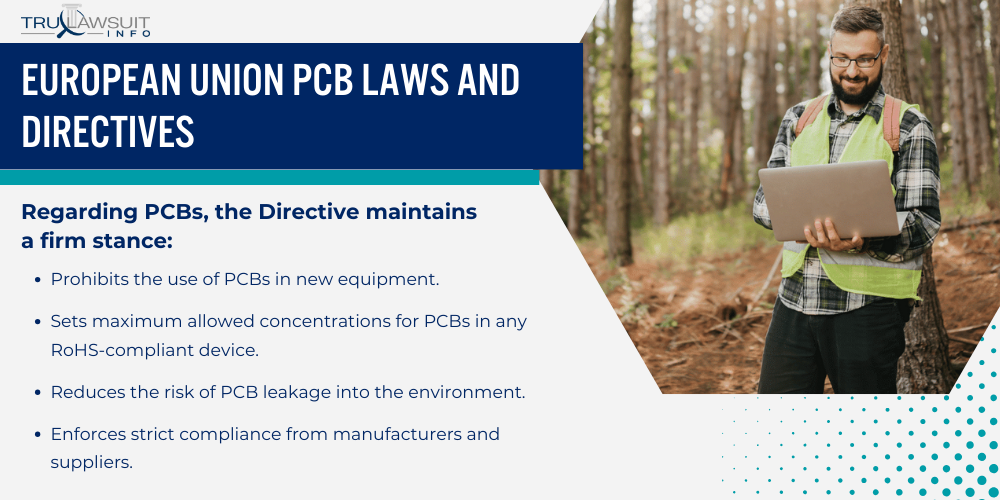
The RoHS Directive and PCB Restrictions
The Restriction of Hazardous Substances Directive (RoHS) is a critical piece of legislation that aims to limit the use of specific hazardous materials in electrical and electronic equipment.
Regarding PCBs, the Directive maintains a firm stance:
- Prohibits the use of PCBs in new equipment.
- Sets maximum allowed concentrations for PCBs in any RoHS-compliant device.
- Reduces the risk of PCB leakage into the environment.
- Enforces strict compliance from manufacturers and suppliers.
REACH Regulation and PCB Management
REACH, which stands for Registration, Evaluation, Authorisation and Restriction of Chemicals, is an EU Regulation that manages risks associated with chemical substances.
It addresses PCBs by:
- Requiring registration of substances, including PCBs, intended for production or use in the EU.
- Facilitating the evaluation of potential risks related to PCBs.
- Authorizing or restricting the use of PCBs based on risk assessment.
- Monitoring and controlling the presence of PCBs in products and as waste.
Implementation of PCB Laws in EU Member States
EU member states play a central role in implementing European directives and regulations related to PCBs.
They are involved in:
- Transposing EU PCB laws into national legislation.
- Establishing local guidelines for PCB disposal and management.
- Monitoring remediation waste activities.
- Ensuring proper enforcement of PCB regulations at the national level.
Each EU Member State adapts the overarching EU regulations to ensure effective management of PCBs, from usage to disposal and remediation efforts.
PCB Laws in the Asia-Pacific Region
The Asia-Pacific region has developed specific laws and regulations to address the challenges associated with the management and disposal of polychlorinated biphenyls (PCBs).
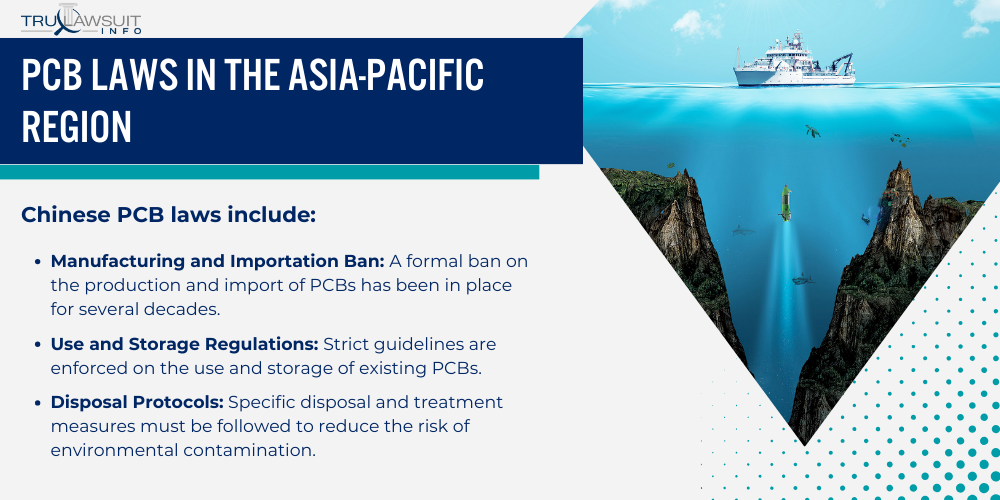
These laws aim to mitigate environmental and health impacts, guiding safe PCB bulk product waste handling and ensuring its appropriate disposal.
China’s PCB Laws and Regulations
In China, PCB management is a critical environmental focus due to the country’s industrial history.
Chinese PCB laws include:
- Manufacturing and Importation Ban: A formal ban on the production and import of PCBs has been in place for several decades.
- Use and Storage Regulations: Strict guidelines are enforced on the use and storage of existing PCBs.
- Disposal Protocols: Specific disposal and treatment measures must be followed to reduce the risk of environmental contamination.
- Monitoring and Enforcement: Government bodies are responsible for regular inspections and enforcement of PCB laws.
Japan’s PCB Control Law and Waste Management
Japan has established a comprehensive legal framework to address PCB waste.
Japan’s PCB Control Law outlines:
- Registration and Reporting: PCB holders must register and provide details on their inventory and management plans.
- Disposal Deadlines: Timelines for the safe disposal of PCBs are strictly enforced.
- Certified Treatment Facilities: PCB spills and treatments must occur in government-certified facilities.
- Public Awareness: Efforts to increase public knowledge about the hazards of PCBs and disposal protocols.
Australia’s PCB Management Plan
Australia’s approach to PCB management is structured and methodical.
Key components of Australia’s PCB laws include:
- National Management Plan: A detailed plan that sets out responsibilities for PCB management and disposal.
- Environmental Protection Policies: Emphasis on protecting the environment through stringent PCB special handling practices.
- Comprehensive Tracking System: A robust system to track the movement and fate of PCBs.
- Phased Reduction and Phase-Out: Long-term goals to reduce and eventually eliminate PCBs in circulation.
PCB Laws in Developing Countries
In developing nations, managing and legislating polychlorinated biphenyls (PCBs) poses unique challenges due to resource constraints and prioritization of other socioeconomic issues.
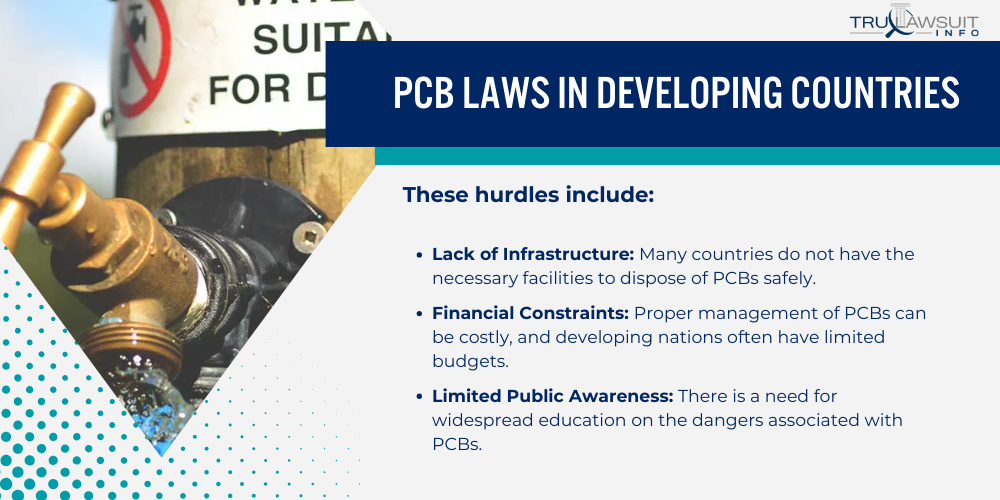
Challenges in Implementing PCB Laws in Developing Nations
Developing countries face several obstacles in enforcing PCB regulations.
These hurdles include:
- Lack of Infrastructure: Many countries do not have the necessary facilities to dispose of PCBs safely.
- Financial Constraints: Proper management of PCBs can be costly, and developing nations often have limited budgets.
- Limited Public Awareness: There is a need for widespread education on the dangers associated with PCBs.
- Inadequate Regulations: Some developing countries have laws that are either outdated or not comprehensive enough to cover all aspects of PCB management.
Case Studies: India, Brazil, and South Africa
While each country has taken steps towards PCB management, significant challenges remain.
Let’s explore the particular situations in more detail:
India:
- India has made progress with PCB management, yet handling legacy PCBs remains an issue.
- There are gaps in the proposed rule that allow for continued improper disposal.
Brazil:
- Brazil has implemented a national plan for PCB management, but enforcement remains inconsistent.
- Transition to cleaner technologies is still an ongoing process.
South Africa:
- South Africa has enacted hazardous waste legislation that includes PCBs.
- However, issues persist with illegal dumping and unregulated recycling practices.
International Assistance for PCB Law Enforcement
The global challenge of PCB contamination requires a collaborative approach.
Developed countries can play a vital role by sharing knowledge and resources with developing nations facing challenges in managing these harmful chemicals.
Addressing PCB-related problems in developing countries often requires international cooperation:
- Technical Support: Developed countries provide technical expertise for safe disposal and management of PCBs.
- Shared Success Stories: Model policies from around the globe can serve as templates.
- Funding: International funds help to finance PCB management initiatives.
- Capacity building: Training and education programs are essential to build local expertise.
The effective handling of PCBs in developing nations not only protects their local environments but contributes to global efforts to reduce the impact of persistent organic pollutants.
Comparative Analysis of PCB Laws Worldwide
Exploring PCB laws globally reveals that while legal frameworks may share core objectives, their execution differs significantly across regions.

This section dissects these variations, examines the success rates of current policies, and assesses the potential for legal refinements.
Similarities and Differences in PCB Laws Across Regions
PCB regulations can be both divergent and harmonious, depending on the region.
They are encountering:
- Shared Objectives: Most countries aim to reduce or eliminate PCB production and use due to their health and environmental impact.
- Restrictions On Use: Regions like the European Union enforce stringent bans on PCBs, while some nations lag in enforcement.
- Varied Cleanup Standards: There is no uniform guideline for PCB decontamination, leading to varied environmental remediation cleanup levels.
- Inventory and Reporting: Mandatory PCB inventory tracking is common, but the rigor of documentation and public disclosure fluctuates.
Effectiveness of PCB Laws in Reducing Environmental Contamination
Successful PCB laws share certain features that effectively lower environmental contamination.
Among these are:
- Enforcement Mechanisms: Robust legal frameworks are backed by strong enforcement agencies.
- Technology Application: Laws encouraging advanced decontamination methods result in greater pollutant reduction.
- Continuous Monitoring: Regular updates and monitoring of PCB storage and disposal contribute to ongoing effectiveness.
- Public Participation: Engaging the community in awareness campaigns enhances law effectiveness through societal involvement.
Gaps and Opportunities for Strengthening Global PCB Laws
There are significant inconsistencies in regulations around the world regarding PCBs. This patchwork approach weakens overall effectiveness.
To address this, a more cohesive set of international standards could be developed, ensuring a more uniform level of protection.
Global PCB laws present opportunities for fortification, especially when addressing:
- Inconsistent Regulations: The variance in laws creates a need for more cohesive international standards.
- Lack of Capacity: Some regions face challenges due to inadequate resources for enforcement and cleanup.
- Evolving Science: Ongoing research may necessitate frequent updates to regulations to reflect new findings.
- Global Collaboration: Stronger international cooperation could bolster less stringent PCB laws and encourage unilateral adherence.
Future Trends in PCB Laws and Regulations
The landscape of PCB laws and regulations is dynamic, reflecting the ever-evolving understanding of PCB damage and its implications for public health and the environment.
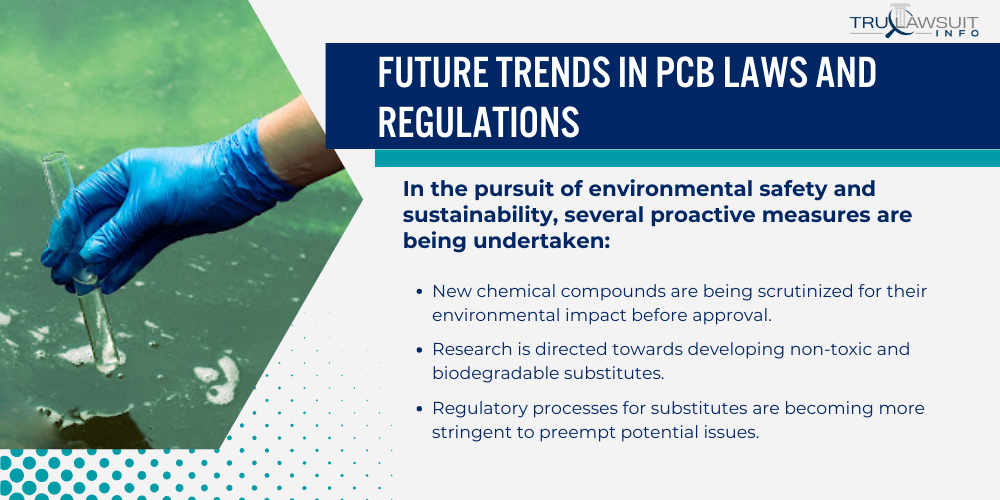
This section explores the anticipated movements toward addressing emerging contaminants, international harmonization of laws, and the shifting burdens of liability and compensation.
Emerging Contaminants and Potential PCB Substitutes
PCB substitutes continue to be developed as an alternative to these harmful contaminants.
However, legislators and environmentalists are vigilant about ensuring that these substitutes are safer for use and do not pose similar risks.
In the pursuit of environmental safety and sustainability, several proactive measures are being undertaken:
- New chemical compounds are being scrutinized for their environmental impact before approval.
- Research is directed towards developing non-toxic and biodegradable substitutes.
- Regulatory processes for substitutes are becoming more stringent to preempt potential issues.
- Public databases of approved substitutes are expected to expand, aiding transparency.
Harmonization of PCB Laws Across Borders
Cross-border collaboration is vital for addressing PCB pollution, given its ability to spread beyond national boundaries.
To effectively combat this challenge, several collaborative efforts are being emphasized:
- Multinational agreements are expected to facilitate more standardized PCB management.
- Joint initiatives are in place to control illegal PCB trade and disposal.
- Shared technology and best practices are increasingly adopted in poorer nations.
- The role of global organizations in monitoring progress and compliance is set to grow.
Increased Focus on Liability and Compensation for PCB Damage
Holding entities accountable for PCB damage is becoming a higher priority within legal frameworks.
As a result, the landscape of legal accountability and compensation is evolving in significant ways:
- The trend towards stricter enforcement of liability laws looks set to continue.
- Companies responsible for PCB contamination may face heightened legal repercussions.
- There is a greater push for establishing funds specifically for compensation purposes.
- Mechanisms for calculating damages are becoming more sophisticated, ensuring fair compensation.
TruLawsuit Info: #1 in PCB Law
TruLawsuit Info is recognized as a leading authority in PCB law, setting the standard in legal precedence and advocacy for environmental safety and human health.
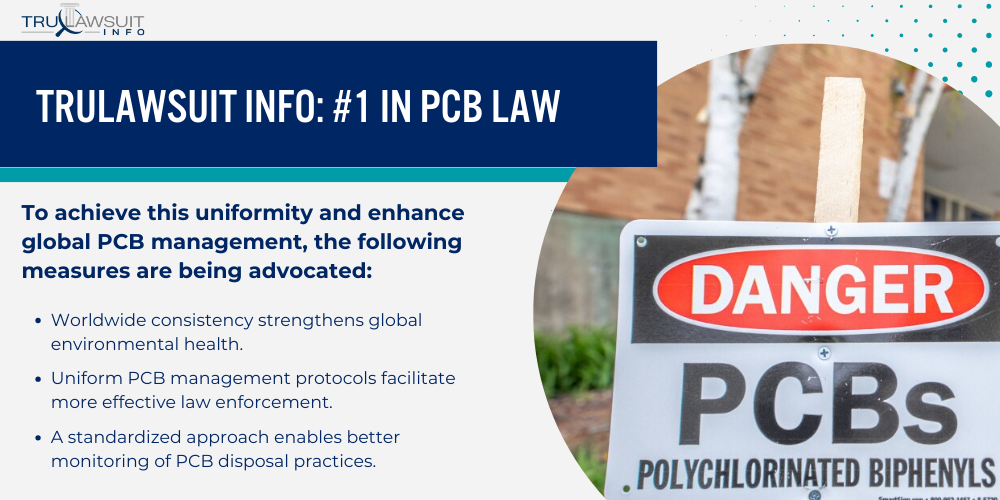
Importance of Strong and Consistent PCB Laws Worldwide
PCB laws are vital for protecting ecosystems and public health from the harmful effects of polychlorinated biphenyls (PCBs).
Nations around the globe have different levels of regulation, creating a patchwork of standards that can lead to inadequate prevention and control of PCB contamination.
Consistency in-laws ensures that all countries uphold the same rigorous safety and environmental standards, thus preventing ‘regulatory safe havens’ for PCB proliferation.
To achieve this uniformity and enhance global PCB management, the following measures are being advocated:
- Worldwide consistency strengthens global environmental health.
- Uniform PCB management protocols facilitate more effective law enforcement.
- A standardized approach enables better monitoring of PCB disposal practices.
- Harmonized laws can lead to shared innovations in decontamination technologies.
International Cooperation on PCB Management
Information sharing and collaboration are at the core of effective international cooperation in PCB management.
When countries work together, sharing research and data, they improve global responses to PCB-related issues.
To foster such cooperation, several strategies are being employed:
- Collaborative research initiatives lead to a better understanding of PCBs.
- International treaties and agreements streamline joint management efforts.
- Resource sharing among nations can enhance the effectiveness of cleanup operations.
- Joint training programs for law enforcement ensure international standards are upheld.
Frequently Asked Questions
-
When were PCBs banned in the United States?
Legislation to ban PCBs was enacted in the United States in 1979.
The Environmental Protection Agency (EPA) issued the ban due to their environmental toxicity and potential harm to public health.
-
Where are PCBs commonly found in the environment?
PCBs are typically present in environments connected to industrial sites or places where PCB-containing equipment was disposed.
PCBs can be found in sources such as fluorescent light ballasts and electrical devices with PCB capacitors, hydraulic oils, and building materials.
-
How are PCBs used in various industries?
Historically, numerous industries have used PCBs for their chemical stability and insulating properties.
This included use in electrical transformers, capacitors, and as coolants in various electrical apparatuses before their ban.
-
What regulations govern the handling and disposal of PCBs?
The EPA regulates PCB handling and disposal under the Toxic Substances Control Act (TSCA).
These laws dictate the precise methods for safe containment, transport, and destruction of PCBs to curtail environmental contamination.
-
Why are PCBs considered toxic and harmful to health?
PCBs are deemed toxic because they can accumulate in the food chain and lead to serious health effects such as cancer, immune system deficiencies, and reproductive issues.
Their capacity to persist in the environment adds to their risk.
-
Under what circumstances is the use of PCBs still allowed?
Limited exceptions to the PCB ban exist.
Certain closed-system applications, such as transformers and capacitors containing PCBs, may be used provided they do not leak and are maintained according to strict federal register regulations.

Experienced Attorney & Legal SaaS CEO
With over 25 years of legal experience, Jessie is an Illinois lawyer, a CPA, and a mother of three. She spent the first decade of her career working as an international tax attorney at Deloitte.
In 2009, Jessie co-founded her own law firm with her husband – which has scaled to over 30 employees since its conception.
In 2016, Jessie founded TruLaw, which allows her to collaborate with attorneys and legal experts across the United States on a daily basis. This hypervaluable network of experts is what enables her to share reliable legal information with her readers!
Have A Case?
Here, at Tru Lawsuit Info, we’re committed to helping victims get the justice they deserve.
To do this, we actively work to connect them with attorneys who are experts in litigating cases similar to theirs.
Would you like our help?
Tru Lawsuit Info is a reliable source of information about issues that may affect your health and safety, such as faulty products, data breaches, and environmental hazards.
Our team of experienced writers collaborates with medical professionals, lawyers, and advocates to produce informative articles, guides, and other resources that raise awareness of these topics.
Our thorough research provides consumers with access to reliable information and updates on lawsuits happening around the country. We also can connect consumers with attorneys if they need assistance.
Camp Lejeune's water contamination issue spanned several decades starting in the 1950s. Exposure to these chemicals has been linked to various serious health issues, including cancer, organ diseases, and death.
Research is increasingly suggesting a link between the use of Tylenol during pregnancy and the development of neurodevelopmental disorders, such as autism and ADHD, in infants.
Legal action is being taken against manufacturers of Aqueous Film-Forming Foam (AFFF), a chemical used in fighting fires. The plaintiffs allege that exposure to the foam caused health issues such as cancer, organ damage, and birth and fertility issues.
Have A Case?
Here, at Tru Lawsuit Info, we’re committed to helping victims get the justice they deserve.
To do this, we actively work to connect them with attorneys who are experts in litigating cases similar to theirs.
Would you like our help?

